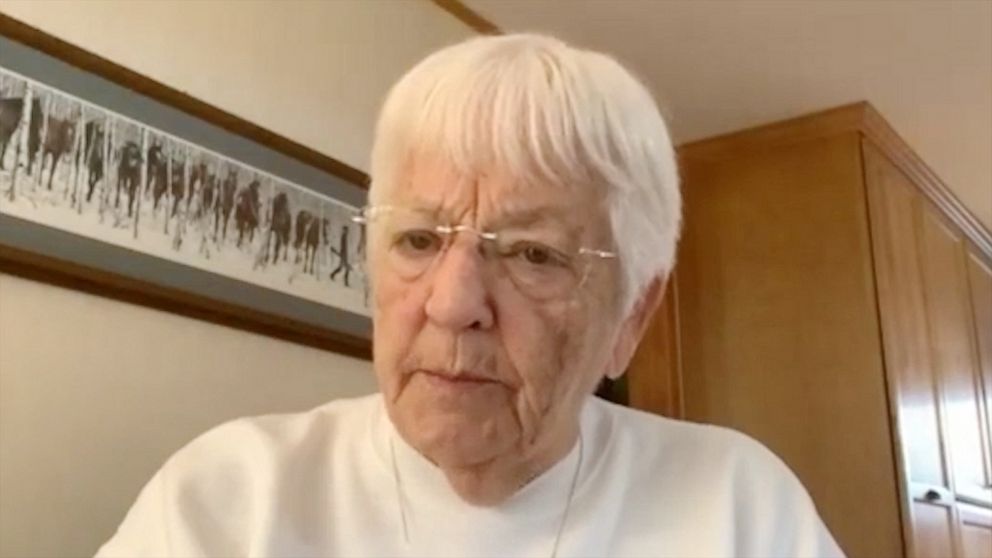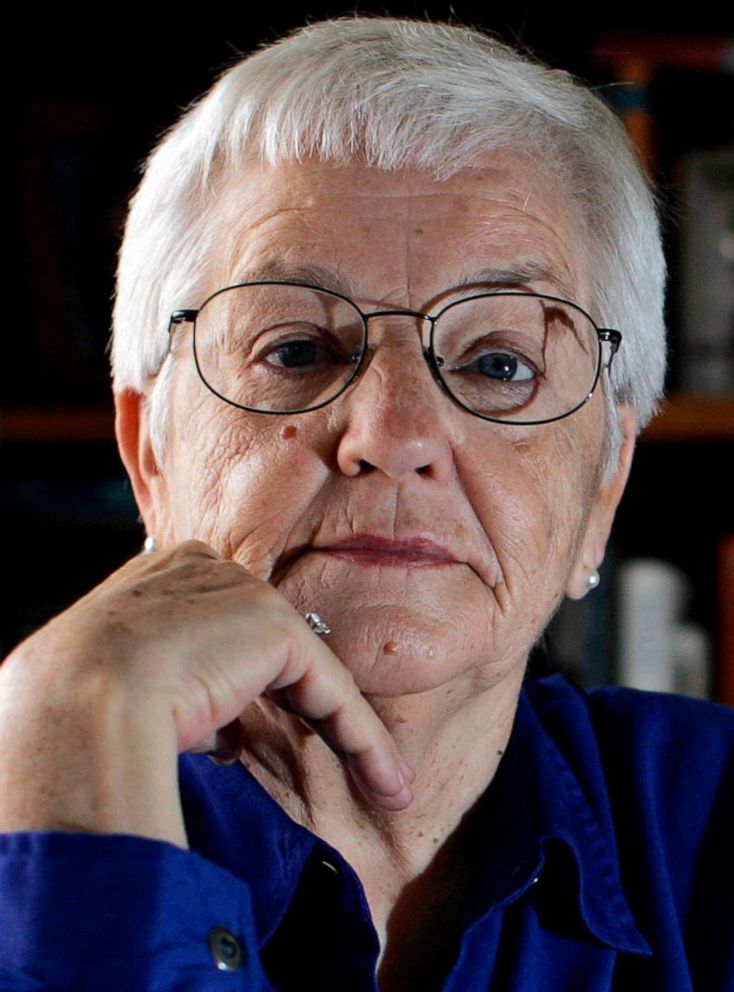50 years before George Floyd, this school teacher used eye color to explain racism to her students. Now, it's more relevant than ever.
The teacher has taught kids new ways of thinking and is now ready for adults.
A 52-year-old social experiment has gone viral.
Archival footage from 1968 soon found itself in feeds after the death of George Floyd on Memorial Day. It features an exercise in which white 8 and 9-years-olds sit in Jane Elliott's class in Riceville, Iowa, wearing blank stares and teary eyes.
But for each of them, the wheels seem to be turning after experiencing an early version of Elliott's infamous "Blue Eyes, Brown Eyes" exercise. To teach about prejudice, discrimination and racism, one group in the exercise is given preferential treatment and praise while the other is subjected to the opposite.
"I created a microcosm of society in my third-grade classroom. This is what we have been doing in this country for the last 300 years," Elliott told "Good Morning America."
Elliott said she first conducted the exercise the day after Martin Luther King Jr.'s assassination, to draw the connection to his death. It not only had a profound effect on her students, but on her, too.
"Little children weren't supposed to know anything about racism," Elliott said. "But when they had the opportunity to act like a racist, they knew exactly how a racist behaves."
A Time for Change
This launched Elliott's work as an educator and lecturer, and for decades, audiences have been astounded by her lessons and challenged by her message.
"We are all members of the human race. And that thought in many white people who base their self-image on the color of their skin is threatening to them, because if their skin color doesn't make them unique and special, then what does?" she said.
As still-relevant exercises, panels and talk show appearances were going viral in the wake of Floyd's death, long-existing systems and symbols began to collapse. The gruesome nature of Floyd's video and the constant replay to an audience under COVID-19 stay-at-home orders ignited a spark that directly took on white supremacy and racism -- and found success.
Police departments were defunded, statues were toppled, flags were banned, people of color were listened to and revered institutions were forced to consider changes.
Books on race and social justice also flew off shelves as many white people sought to make sense of things and embraced a new "wokeness."
But Elliott is convinced many white people have been "woke" all along but chose to ignore the treatment of Black people and other people of color to maintain power and a sense of comfort. But both have been disrupted because of the social justice protests.
"[White people] have no choice now, they're going to have to dismantle racism," she said.
Looking Inward
Elliott said white people have a responsibility to eliminate their own indoctrinated views of white supremacy and the role they play in systemic racism. She also shared steps white people can take to begin to look at, understand and address their own perspectives.
1. Recognize the right to be ignorant
"[White people] have the right to be ignorant -- that isn't a privilege, that's a choice you make," Elliott said, noting the plethora of books available that dispel the idea of different racial categories and the thought that some racial categories are better than others.

"It's difficult to give up your feeling of superiority," she said. "[Some will] do anything to avoid giving up their feeling of superiority, even though it's based on a lie."
2. Assess your behavior
Elliott recommends going to her website to download materials developed by Judith Katz.
"The first page is a set of typical statements that white folks make that they think aren't saying something racist. The second page is a set of clarifications, so, how those statements are perceived by those who hear them," she said. "The third page is a set of commitments to combat racism: 18 things you can do on your own initiative to deal with your own problem."
She recommends going through that list, circling yes or no for each statement, then going back to one where you circled no. From there, she suggests putting a date by your choice and committing to doing better in that subject for a month. Take some notes along the way and then, at the end of the month, reflect on what you've learned, and then pick another commitment to work on, she said.
"Somebody will say, 'Now, racism is a societal problem.' Societies are made up of individuals and individuals change their behaviors. We can do away with racism in this country," she said. "If we want to change this thing, we can, but individuals have to change their behaviors. They have to change their level of knowledge."
3. Do unto others
Elliott said that in a past panel, she engaged in a conversation with another white woman who said, "Well, if [people of color] get power, aren't they going to want to treat us the way we have treated them?" Elliott said she used the exchange to show the woman that people of color weren't out to "get even" with white people, but did offer advice.
"If white people want to be treated fairly in the future, they had better treat people of color fairly in the present, because what we do in the present constructs the future," she said.
4. Speak up
"Those of us who are hearing these ugly things, statements being made, have to be prepared to confront them," Elliott said, noting how one of her students once confronted her during the "Blue Eyes/Brown Eyes" exercise by asking, "How come you're the teacher here if you got them blue eyes?"
Teaching her students to confront racist language also taught them not to tolerate it. Her father also utilized helpful reactions in instances where such conversations took place.

"He would give you a look and say, 'Do you really mean to tell that story? You're gonna tell that story?' And if it continued, he went into the other room. He wouldn't tolerate it, he simply walked away from it," she said.
5. Vote
"Every person who is a voting age must go and vote against what is happening in this country where racism, sexism, ageism, homophobia and ethnocentrism are concerned," Elliott said. "We are being led in the wrong direction and people have to stand up and say, 'No, we're not going to do this. This is going to remain a democracy. It is not going to become an oligarchy. It is not going to become a monarchy. It is going to remain a democracy.' And the only way you can do that is to vote in November."
Recommended Reading
As Elliott said, there are plenty of texts you can read to explore ideas related to human history, systemic racism and dismantling white supremacy. Below is a collection of books and one magazine that she highly recommends:
- "The Color of Law: A Forgotten History of How Our Government Segregated America" by Richard Rothstein
- "When at Times the Mob Is Swayed: A Citizen's Guide to Defending Our Republic" by Burt Neuborne
- "The Myth of Race: The Troubling Persistence of an Unscientific Idea" by Robert Wald Sussman
- "The Racial Conditioning of Our Children: Ending Psychological Genocide in Our Schools" by Nathan Rutstein
- "Sapiens: A Brief History of Humankind" by Yuval Noah Harari
- National Geographic April 2018 issue




